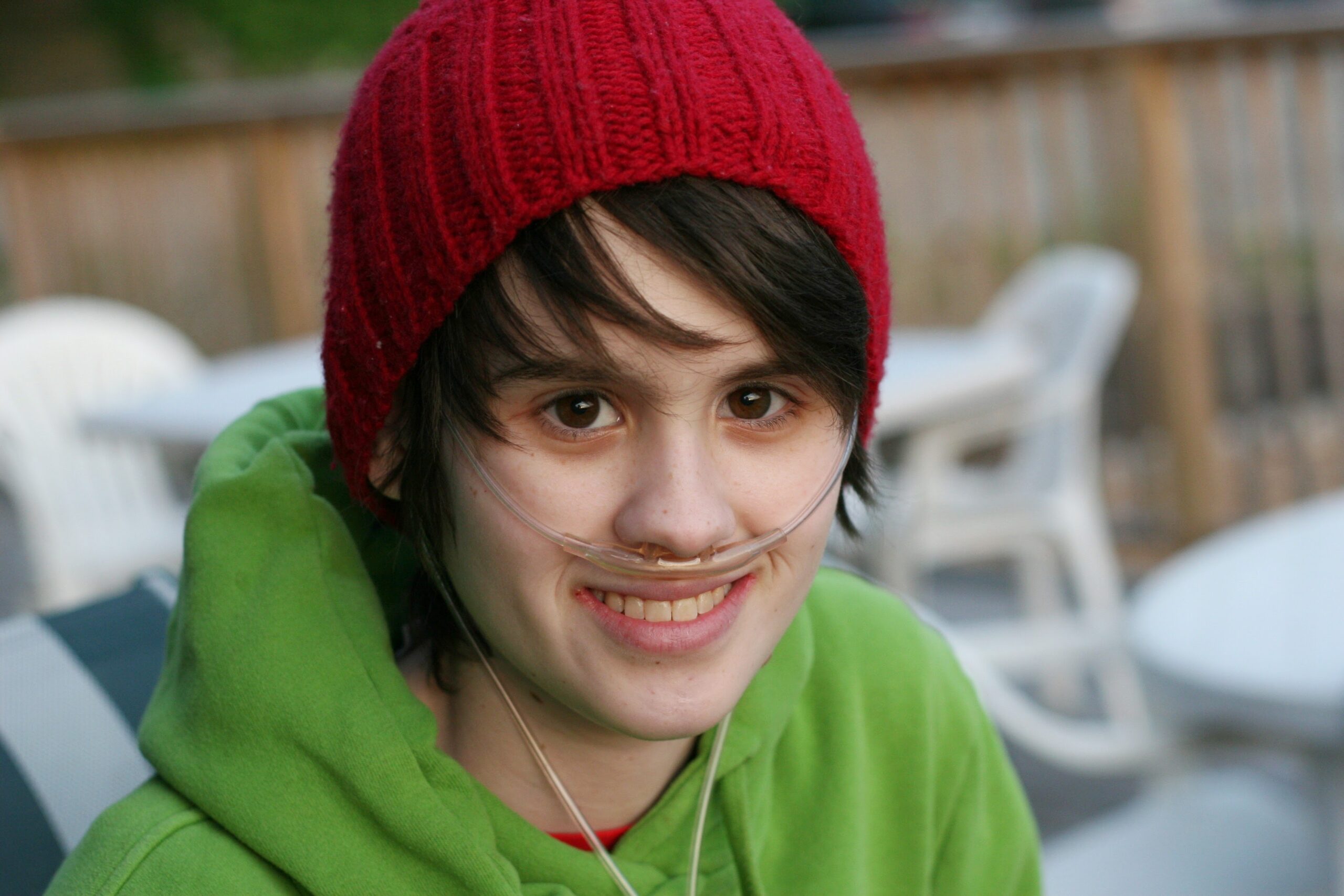The sections below share basic information about treatments and supports for this age group.
click here to download patient packet. (coming soon)
Oxygen Therapy
Many types of chILD make it harder for the lungs to move oxygen to the body.
When a person breathes, air passes through the airways into tiny air sacs called alveoli. These alveoli are where the oxygen we breathe passes into the blood. This is also where carbon dioxide (a waste gas from our cells) leaves the blood so we can breathe it out. Doctors can measure the amount of oxygen in the blood (oxygen saturation) using a pulse oximeter. If oxygen saturations are low, your child may be given oxygen to use at home. Read More
Nutrition
People with lung disease can have trouble growing and gaining weight. This is because they may use more energy (calories) to breathe. They usually need to eat more calories than people without lung disease. Your medical team may include a dietitian who can help make sure you are eating what you need to grow. Read More
Home Supplies
Supporting your teen with chILD usually means needing to use medical equipment at home. Your medical team will work with a homecare or Durable Medical Equipment (DME) company to make sure the right supplies are ordered for your child. Read More
Some examples of DME include:
- Oxygen and monitors
- Nebulizer machines
- Suction machines
- Ventilators or positive pressure machines
- Feeding tube supplies
Travel
For people with chILD, any travel outside of the home usually means more careful planning.
Your homecare company will help make sure you have everything you need for travel to and from appointments and local places. See the topics below for more information on traveling with young kids who have chILD.
Travel Close to Home
Children with oxygen or other breathing support will have supplies that stay at home and some supplies that are portable. Portable supplies can be carried from place to place more easily than the larger home (“stationary”) equipment.
Every time you leave the house, you should bring any supplies your child could need to help their breathing. This includes back-up medicines, extra oxygen, rescue medicines, suction, and extra feeds. See an example of a Go Bag checklist here. Many families will build in “wiggle room” or extra time for unplanned events during outings.
Long Distance Travel
Travel further from home can be a bigger challenge. Start planning your trip several weeks in advance to make sure you can get all the supplies your child needs. Here is a list of things to consider:
- Know where the closest children’s hospitals are at your final destination and along the way.
- Make sure to bring enough medicines to last for the entire trip and a few extra days, just in case. Some medicines need to be refrigerated, so you may need to use a cooler.
- Let your homecare company know where you’re going and how long you’ll be gone. They can help make sure you have the right type of supplies for long-distance travel.
- Stationary oxygen concentrators can be used at your final destination and during overnight stops on the way.
- Portable oxygen tanks can be used while driving. Your homecare company can help you find places to refill your tanks during travel. Always refill when the tank pressure drops below 500 psi.
Air Travel
People with lung disease can have lower oxygen levels when flying so it is important to talk to your child’s care team before air travel. Some types of lung problems make it very dangerous to fly.
Different airlines have different rules about what supplies you can and can’t bring on the airplane. It is always best to call ahead to make sure you have the right supplies and paperwork to board the plane.
Here is a list of things to consider:
- Call the airline to make arrangements before you book your flight. You cannot bring your own oxygen tanks on the plane. There can be extra fees for using the airline’s oxygen tanks. There are some types of portable oxygen concentrators that can be used if approved by the FAA (Federal Airline Administration).
- The high altitude of flying means your child may need more oxygen than normal during the trip. Your medical team can help you plan how much oxygen to give.
- Talk to your homecare company about having oxygen supplies delivered to your destination. They can usually work with other companies at your destination to make this happen.
- Travel with a doctor’s statement about your child’s oxygen needs or prescription. Many airlines have their own forms that your child’s doctor can fill out and sign. Make sure you give your doctor a couple of weeks notice to complete these forms.
Keeping my Child Safe
Information coming soon
Staying Active
Information coming soon
School Support
Information coming soon
Mental Health
Information coming soon
What to Watch For
Information coming soon
Follow us on social media:
Address:
311 Elm Street
Ste C1#1045
Cincinnati OH 45202
Email: info@child-foundation.org
